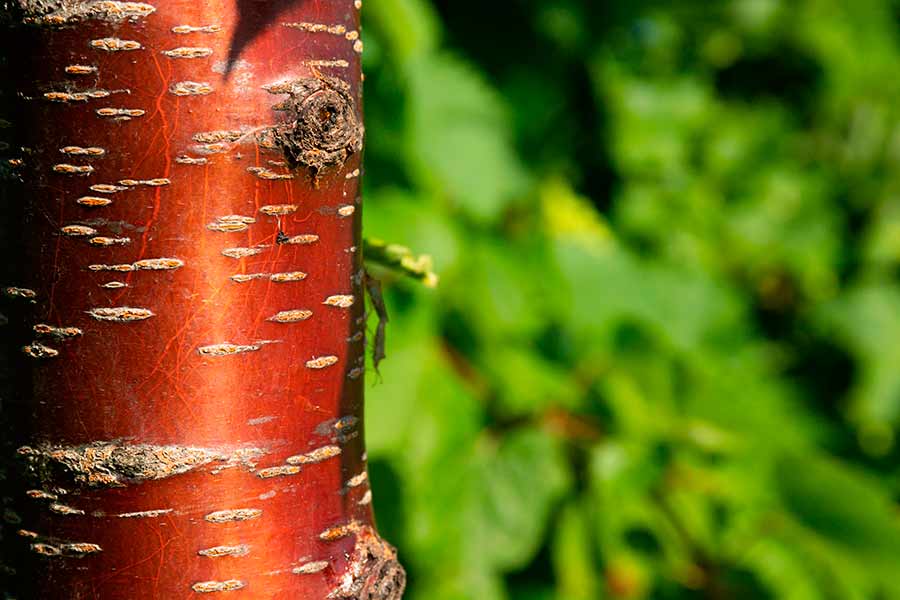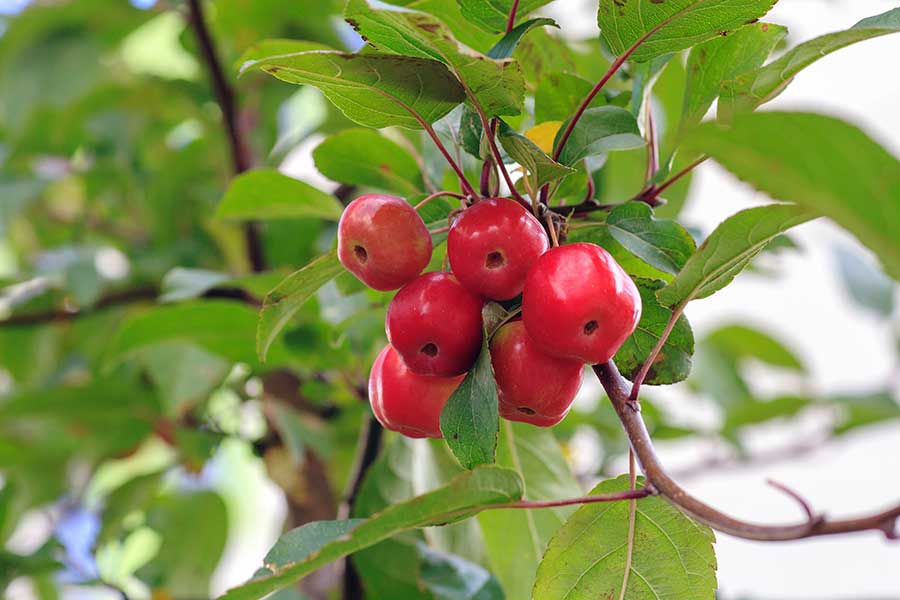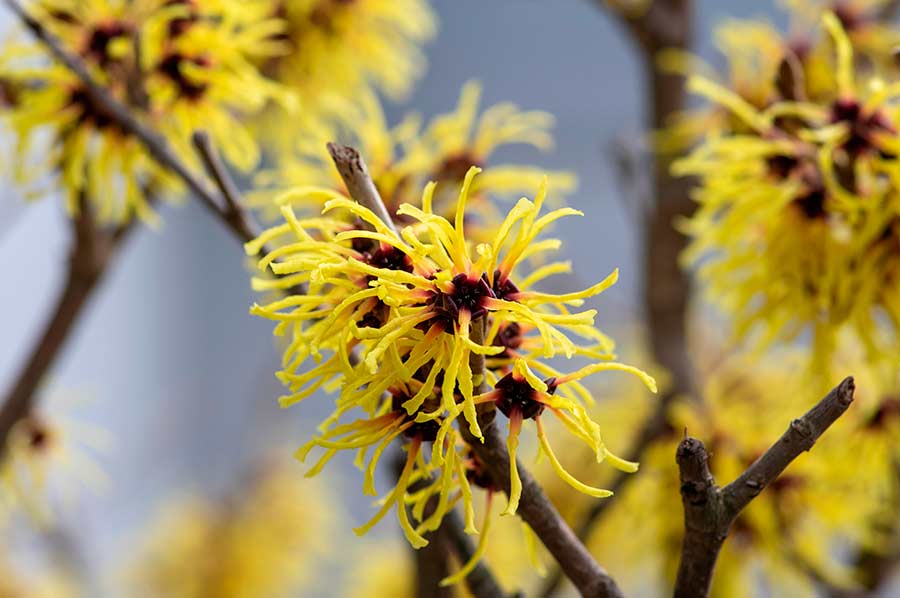- Home
- Leisure & Lifestyle
- Home & Garden
- 8 plants that look good all year
Whether you’re an avid gardener or not, it can be satisfying to own plants that add life to your home and garden across the year.
Plus, not having to swap plants over as the seasons change can save both time and money.
So, to help you out, we’ve put together a list of eight plants that look good (almost) all year round.
1. Oakleaf hydrangea

Oakleaf hydrangeas (also known as Hydrangea quercifolia) are a medium-sized shrub from North America. Like those on American oak trees, the leaves are large and lobe-shaped – and the flowers grow in small, cone-shaped clusters, which begin as a greenish-white and turn pinkish-purple with age.
In spring and summer, you can expect tall, elegant displays of flowers in different shades of white and pink. Autumn brings leaves in brilliant reds and oranges, and rustic-looking dried flower heads. And in winter, when the leaves fall, the bark peels back to reveal a striking dark layer that’ll add texture to your garden.
As well as being a shrub for every season, oakleaf hydrangeas are also low-maintenance, hardy garden plants. They grow well in moist, well-drained soil and in full sun to partial shade. They also don’t need pruning every year unless they become unruly.
It’s best to plant oakleaf hydrangeas during spring, early summer, or early to late autumn. Check out this guide from Plantura to find out more about how to care for oakleaf hydrangea.
2. Tibetan cherry tree

If you’d like to add something magnificent and ornamental to your garden, why not consider a Tibetan cherry tree (or Prunus serrula)? These round-headed, deciduous trees from Western China and Tibet will reach around six to eight metres in height, given the right conditions.
They’re well known for their rich, polished, mahogany bark, which peels off in horizontal bands with age to reveal colours of honey and cinnamon. Even in winter, when the branches are bare, the Tibetan cherry tree’s bark is spectacularly shiny.
In spring, you can expect an eruption of tiny white flowers. And, in autumn, the tree will often produce small non-edible fruit (that turn bright white when ripe) and the green leaves turn yellow before they fall.
Tibetan cherry trees will tolerate most soil types as long as it’s moist, well-drained, and rich in organic matter. They require very little pruning but do need full sun (or part shade) to flourish.
You can buy these highly sought-after trees and read about how to care for them on the Chew Valley Trees website below.
3. Congo cockatoo

If you’re looking for a plant that’ll bring exotic bursts of colour to the inside of your home all year round, then look no further than the Congo cockatoo (also known as Impatiens niamniamensis or the parrot plant), which originates in East Africa.
This charming and unusual plant has woody, rich, brown stems; glossy, forest green leaves; and vibrant clusters of yellow and/or red flowers that resemble little parrots.
Because this tropical plant is so uniquely beautiful, you might be wondering if there’s a catch – but it produces blooms all year round and requires very little care.
Congo cockatoos do, however, shy away from the cold, so they’re happiest when kept away from drafts. In warmer climates, some people might grow them on patios or outside, though in the UK, they’re best kept indoors.
Congo cockatoos thrive in brightly-lit spaces and enjoy soil that’s kept moist, but well-drained. To find out more about how to care for Congo cockatoo plants, check out the video below.
4. Blueberry bushes

If you’re looking for something that’ll bring value to your garden throughout the year, blueberry bushes are a top choice.
A blueberry bush will provide fruit between June and August, and produce beautiful white, bell-shaped blooms in spring and summer. Then, in autumn, the leaves will turn a fiery shade of red.
Blueberry bushes are hardy and can survive freezing temperatures – they’ll just lie dormant until the weather warms up. Plus, because they only grow up to one metre high and are quite compact, they’re ideal for growing in smaller gardens and patios.
When it comes to growing and caring for blueberry bushes, they can be planted at any time of year in flower beds or containers (as long as the soil isn’t frozen), and soil should be kept moist (but not waterlogged) throughout the growing season.
Blueberry bushes like acidic conditions, so watering with rain water rather than tap water is a good way to raise the pH levels of the soil. Blueberry bushes also thrive in sunny spots and enjoy a weekly feed during summer when they’re producing fruit.
To learn more about how to grow and care for blueberry bushes, you might like to read this article from Gardeners’ World.
5. Forest pansy

Native to the UK, the forest pansy (or Cercis canadensis) is a small, dramatic-looking shrub or tree with multiple stems. It’s grown mainly for its striking foliage and typically reaches about six to nine metres in height.
In spring, bare stems are adorned with pinky-violet, pea-like blossoms. The leaves fade to shades of red, purple, orange, and bronze in the autumn, making for an impressive display of flaming colour.
Forest pansies can be planted at any time of year, and they yield the best results when grown in fertile, moist, well-drained soil, and sun or partial shade. They’re also perfect for growing against walls.
For more tips on how to grow and care for forest pansies, check out this guide from the Royal Horticultural Societ RHS.
6. African violet

African violets (also known as Streptocarpus) are charming, compact houseplants that can add a pop of colour to your home year round. They come from the East African tropical rainforests of Tanzania and Kenya.
These cheerful plants have cute, fuzzy leaves arranged in a rosette shape – and they produce bright, beautiful blooms in shades of white, red, pink, blue, and mauve. According to the RHS, when given the right growing conditions, African violets can flower non-stop for months on end.
As tropical plants, African violets are happiest when they’re placed in bright, indirect light for several hours a day, are watered regularly (with room-temperature water), and are stood in a container of damp gravel to provide humidity. Misting should be avoided as it can encourage mould and mildew.
For more tips on how to get the most out of African violets, why not check out this handy guide from The Spruce? The video below will also show you how to care for them after they finish blooming.
7. Crab apples

Crab apples are small decorative fruits that have long been associated with love, fertility, and marriage. They’re ancestors of the cultivated apple, and trees can live up to 100 years – growing, on average, to heights of 15-20ft. And, though crab apples are small and sour, they can be used to make delicious jelly!
Fruits are produced in August and September, and are green at first and ripen to yellow – but crab apple trees also offer plenty of interest throughout the year. In spring, sweetly scented pinky-white blossoms appear in clusters on bare branches, and some crab apple tree varieties also produce ornamental foliage throughout the summer months.
Crab apple trees can be grown in containers at any time of year, and bare-root varieties can be planted between November and March. There are many different types, but Gardeners’ World recommends a few top picks, including Malus ‘Butterball’, Malus ‘Comtesse de Paris’, and Chinese crab apple (Malus hupehensis).
In terms of growing conditions and ongoing care, crab apple trees do best when planted in a sunny spot in moist, well-drained soil that’s enriched with lots of organic matter. You can find out more about how to grow crab apples in this guide from Lovethegarden.
8. Witch hazel

Witch hazel (Hamamelis virginiana) is well known for its eerie appearance and will make for an eye-catching addition to any garden. Native to Asia and North America, these shrubs produce spidery-looking flowers in shades of red, orange, and yellow that have a strong, herby scent.
One of the reasons that witch hazel plants are so popular is because they produce their best blooms on bare branches in late winter and early spring. Plus, witch hazel’s oval leaves provide pretty greenery during summer and turn an intense red colour before falling in autumn.
Witch hazel also has medicinal properties and has been used to treat skin ailments (such as acne, bruising, and burns) for centuries. Today, it’s a key ingredient in many over-the-counter medications.
As far as care goes, witch hazel is very low-maintenance – it doesn’t need much pruning and grows well in sun or partial shade. However, it’ll need shelter from cold winds to reach its full potential.
Witch hazel also spreads quite slowly and can be planted in large pots in spring and summer if you don’t have an available flower bed.
To find out more, you might like to check out this guide from the RHS on how to grow witch hazel, or watch the video below.
Final thoughts…
Investing in plants that offer more than one season of interest can be a great way to save time and money, and keep your living spaces looking good (almost!) all year round.
For more growing tips and inspiration, why not check out the gardening section of our website? Here, you’ll find everything from monthly gardening checklists to plants you can grow that are good for your health.
Can you recommend any other plants that look good all year round? Will you be planting any of the options above? We’d love to hear from you in the comments below.
Elise Christian is Lifestyle Editor at Rest Less. She joined Rest Less in 2018 after achieving a first class Master’s Degree in Journalism from the University of Kent, and writes across a range of lifestyle topics such as mental health, home and garden, and fashion and beauty. Prior to this, she worked as a freelance writer for small businesses and also spent a year training to be a midwife. Elise spends her spare time going to the gym, reading trashy romance novels, and hanging out with loved ones. She also loves animals, and has a fascination with sharks and tornadoes.
* Links with an * by them are affiliate links which help Rest Less stay free to use as they can result in a payment or benefit to us. You can read more on how we make money here.
